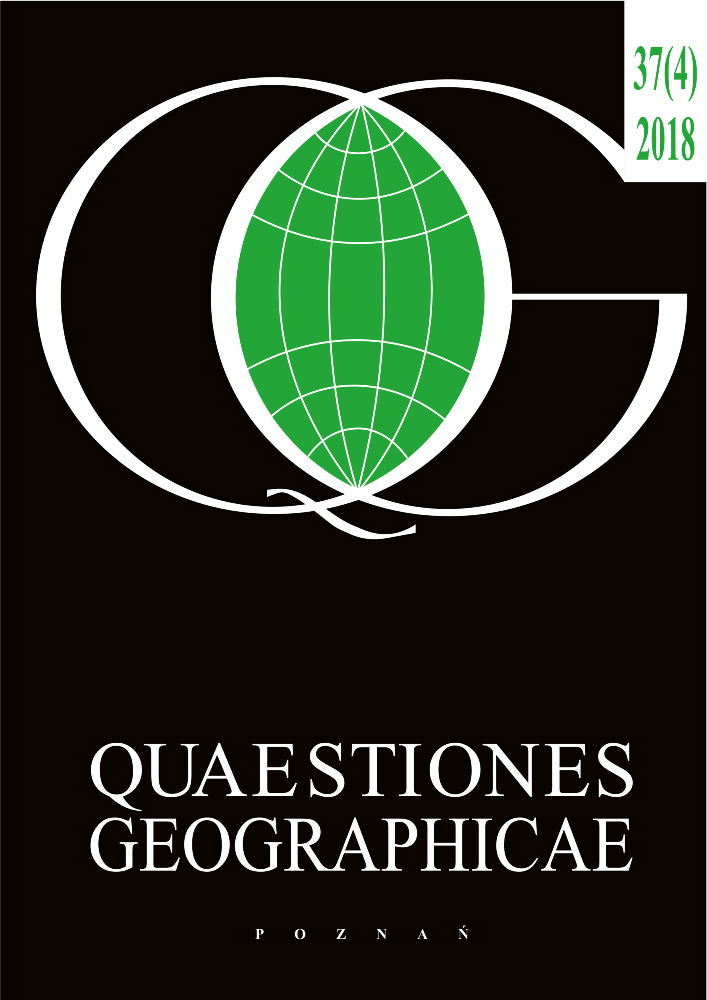Abstract
The objective of this study is the characterisation of the Spanish autonomous communities as tourist destinations for Spanish trips, based on the activities carried out, using the principal component method. The Spanish tourist is not only motivated by the sun and beach. This paper aims to clarify how Spanish people consider other tourist destinations. We contrast how frequently other types of tourism are valued when choosing their destination within the Spanish geography. Inland tourism, sports tourism, entertainment as well as gastronomy are becoming increasingly important.
References
Anderson T.W., 2004. An introduction to multivariate statistical analysis. John Wiley and Sons, Inc., New York.
Barretto M., 2004. Produção científica na área de turismo. In: Moesch M.M., Gastal S., (orgs). Um Outro Turismo é Possível (Other tourism is possible). Contexto, São Paulo: 83–88.
Bigné J.E., Sánchez I., 2001. Evaluación de la imagen de destinos turísticos: Una aplicación metodológica en la Comunidad Valenciana (Evaluation of the image of tourist destinations: A methodological application in the Valencian Community). Revista Europea de Dirección y Economía de la Empresa 10: 189–200.
Bigné J.E., Sanchez M.I., Sanchez J. 2001. Tourism image, evaluation variables and after purchase behavior: Inter-relationship. Tourism Management 22: 607–616.
Bordas E., Rubio M.L., 1993. La imagen turística de España: un modelo de gestión a largo plazo (The tourist image of Spain: A long-term management model). Información Comercial Española 722 (octubre): 107–118.
Cabrer Borrás B., Sancho Pérez A., Serrano Domingo G., 2001. Microeconometría y decisión (Microeconometrics and decision). Pirámide, Madrid.
Cánoves Valiente G.,Villarino Pérez M., Blanco-Romero A., De Uña Álvarez E., Espejo Marín C., 2014. Estrategias y productos en Catalunya, Galicia y Murcia (Strategies and products in Catalonia, Galicia and Murcia). Universidad de Valencia, Valencia.
Castrogiovanni A.C., 2007. Lugar, no-lugar y entre-lugar. Los ángulos del espacio (Place, non-place and between-place. The angles of space). Estudios y perspectivas en turismo 16(1).
Dazy F., Le Barzic J.F., 1996. L’analyse des données évolutives. Méthodes et applications. Éditions Technip, Paris.
Ferreira Lopes S.D., Rial Boubeta A., Varela Mallou J., 2010. Segmentación post hoc del mercado turístico español: Aplicación del análisis cluster en dos etapas (Post hoc segmentation of the Spanish tourism market: Application of the two-stage cluster analysis). Estudios y Prespectivas en Turismo 19(5): 592–606.
Gallarza M.G., García H.C., Saura I.G., 2002. Destination image. Towards a conceptual framework. Annals of Tourism Research 29(1): 56–78.
Hair J.F., Anderson R.E., Tatham R.L., Black W.C., 1999. Análisis Multivariante (Multivariate analysis). Pearson/Prentice-Hall, Madrid.
Johnson D.E., 2000. Métodos multivariados aplicados al análisis estadístico de datos. (Multivariate methods applied to statistical data analysis). Thomson-Paraninfo, Madrid.
Merinero R., Pulido J.A., 2009. Desarrollo turístico y dinámica relacional: metodología de análisis para la gestión activa de destinos turísticos (Tourism development and relational dynamics: Analysis methodology for the active management of tourist destinations). Cuadernos de Turismo 23: 173–194.
Morin E., 2000. Ciência com Consciência (Science with consciousness). Bertrand Brasil, Rio de Janeiro.
Panosso Netto A., 2007. Filosofía del turismo. Una propuesta epistemológica (Philosophy of tourism. An epistemological proposal). Estudios y Prespectivas en Turismo 16(4): 1–10.
Ortega Valcárcel J., 1998. El patrimonio territorial: el territorio como recurso cultural y económico (Territorial heritage: The territory as a cultural and economic resource). Ciudades 4: 33–48.
Pearce D., 2014. Destinos Turísticos: conceptos e implicaciones para su gestión en tiempos de cambio (Tourist destinations: Concepts and implications for its management in times of change). In: López Palomeque F., Cánoves Valiente G. (eds), Turismo y Territorio. Innovación, renovación y desafíos. Tirant Humanidades, Valencia: 21–34.
Pérez López C., 2005. Métodos estadísticos avanzados con SPSS (Advanced Statistical Methods with SPSS). Thomson-Paraninfo, Madrid.
Picón E., Varela J., 2000. Segmentando mercados con análisis conjunto: una aplicación al sector turístico (Segmenting markets with joint analysis: An application to the tourism sector). Psicothema 12(2): 453–458.
Pillet Capdepón F., 2015. Del espacio geográfico al turismo como uso y disfrute del territorio comarcal: una reflexión teórica desde España (From geographic space to tourism as use and enjoyment of regional territory: A theoretical reflection from Spain). Revista de Geografía Norte Grande 62: 185–201.
Plan Nacional e Integral del Turismo (National and Integral Tourism Plan) (2012–2015) http://www.minetur.gob.es/turismo/es-es/documents/pnit_2012_2015_v2.pdf.
Rial A., García A., Varela J., 2008. Una aplicación metodológica para el estudio de la Imagen de Marca de un destino turístico (A methodological application for the study of the brand image of a tourist destination). Pasos. Revista de Turismo y Patrimonio Cultural 6: 1–10.
Rial A., Ferreira S.D., Varela J., 2010. Aplicação da Análise Conjunta no Estudo das Preferências Turísticas (Application of the joint analysis in the study of tourism preferences). Revista Portuguesa de Marketing 26.
Richards G., 2018. Cultural tourism: A review of recent research and trends. Journal of Hospitality and Tourism Management 36:12–21. doi.org/10.1016/j.jhtm.2018.03.005.
Rivas J., 2008. Estructura y economía del mercado turístico (Structure and economy of the tourist market). Septem ediciones, Oviedo.
Rodríguez P., Molina O., 2007. La segmentación de la demanda turística española (The segmentation of the Spanish tourist demand). Metodología de Encuestas 9: 57–92.
Uriel Jiménez E., Aldás Manzano E., 2005. Análisis Multivariante Aplicado (Applied multivariate analysis). Thomson-Paraninfo, Madrid.
Valls J.F., 1992. La imagen de marca de los países (The brand image of the countries). McGraw-Hill, Madrid.
Varela J., Picón E., Braña T., 2004. Segmentation of the Spanish domestic tourism market. Psicothema 16(1): 76–83.
Varela J., García A., Manzano V., Rial A., 2006. Development of an index to assess the brand image of tourist destinations. Anales de Psicología 22: 155–160.
Wilson E., Hollinshead K., 2015. Qualitative tourism research: Opportunities in the emergent soft sciences. Annals of Tourism Research 54:30–47. doi.org/10.1016/j.annals.2015.06.001.

